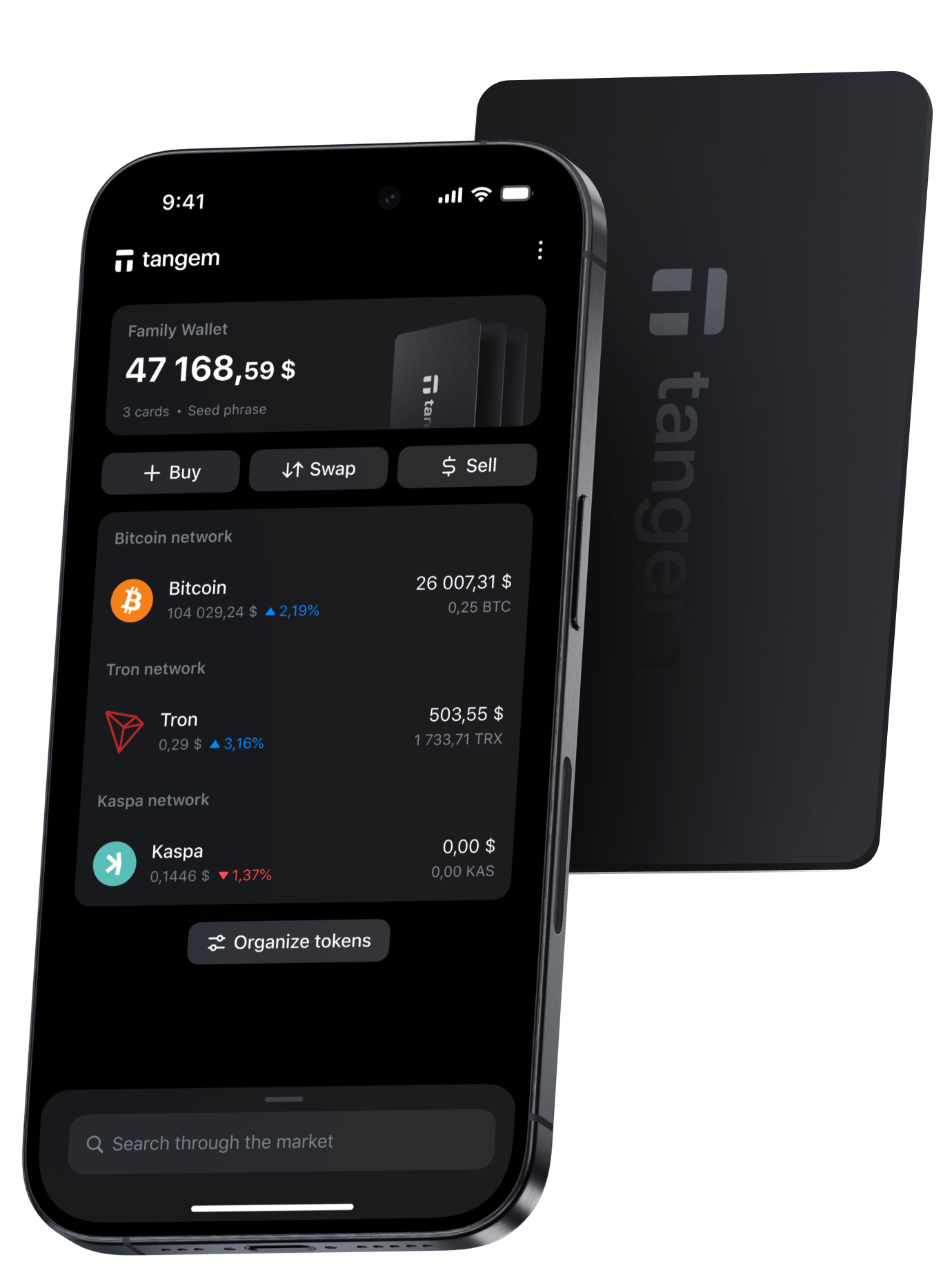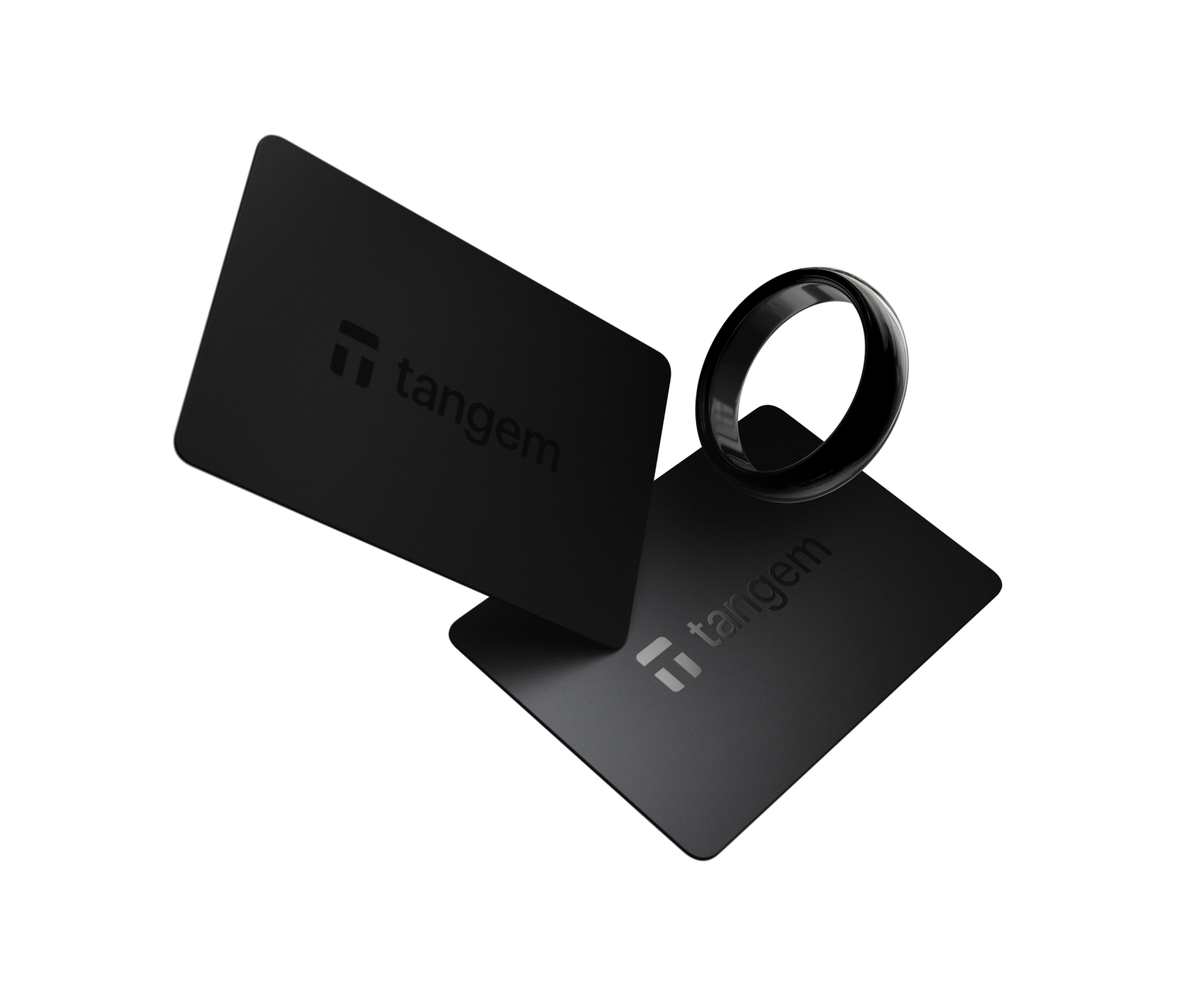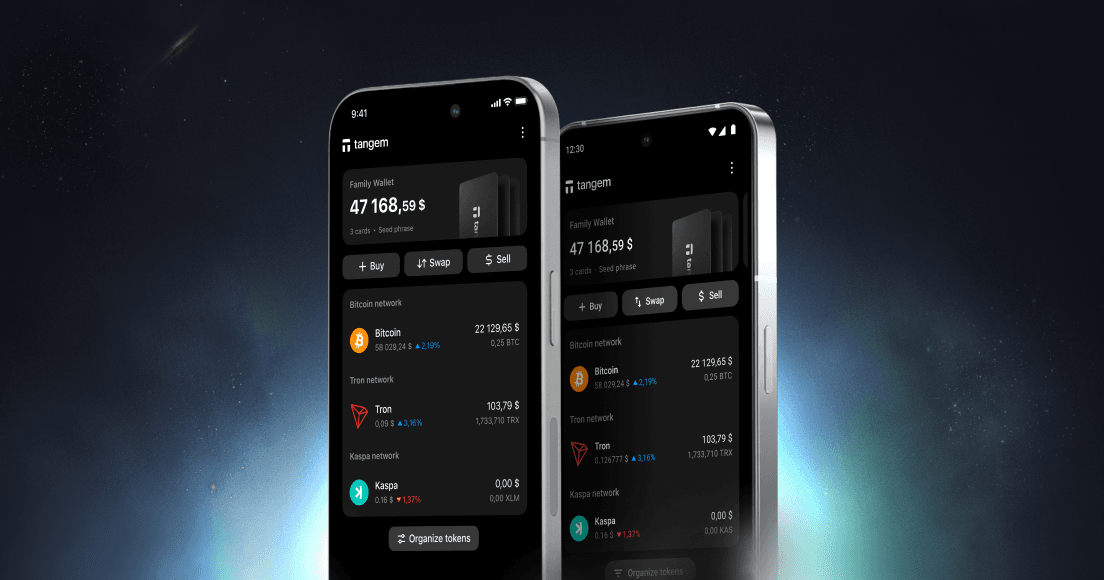
Food Token wallet
The most secure hardware wallet for your Food Token
Join the Tangem family! Protect your Food Token like thousands of satisfied users with our top-notch hardware wallet.

How to secure your Food Token with Tangem?
When you buy or hold Food Token in Tangem, it secures your private keys in many ways:
- With the seedless setup and smart backups on extra devices, your Bitcoin is safe and accessible only to you.
- Tangem is IP69K water and dustproof, built to protect against extreme temperatures, EMPs, ESCs, and X-RAYS.
- An access code and biometric authentication protect against unauthorized access.
- Private keys are generated and stored on its EAL6+ CC secure element.
How to get a Food Token Crypto Wallet?
Tangem products are for everyone, from beginners to experts. They keep your crypto safe and easy to manage. With cutting-edge technology, Tangem lets you control and protect your digital assets.
Get TangemWhy choose Food Token wallet with Tangem.
What is Food Token (FOOD)?
Food Token, denoted as $FOOD, is a digital currency that powers the Foodie Frens community—a vibrant group centered around culinary themes. This initiative invites participants to "stock their digital pantry" with $FOOD tokens, promoting a community-centric ecosystem within the crypto landscape.
What is a Food Token wallet?
A Food Token wallet is a tool for managing your $FOOD assets, keeping your private keys secure and allowing you to control your Food Token address. The actual $FOOD tokens dwell on the blockchain, while the wallet’s role is to create and hold these private keys, giving you the ability to send, receive, and oversee your Food Token portfolio.
How does a Food Token wallet work?
Food Token wallets leverage public and private key pairs for managing blockchain accounts. Your private key, essential for accessing your Food Token account, should remain confidential. The public key, however, can be freely shared for receiving $FOOD. Transferring funds necessitates the linked private key. Tangem Wallet generates and safely stores these private keys within its embedded chip.
What are the types of Food Token wallets?
Exchange Food Token Wallets:
Use custodial wallets on centralized platforms like Coinbase or Binance, which facilitate Food Token purchases with fiat money but entail the risk of restricted access due to accounts being custodially managed.Software Food Token Wallets:
Software applications for managing your Food Token’s private keys, offering user convenience but susceptible to cyber risks. These include:- Mobile Food Token Wallets: Mobile apps that grant on-the-go access to your Food Token resources.
- Desktop Food Token Wallets: Installed on your computer, storing private keys on local drives.
Hardware Food Token Wallets:
Offline options, like Tangem, delivering superior protection against online threats.
How to Choose the Best Food Token Wallet
The optimal choice in wallets aligns with your personal preference, balancing ease of use, dependability, longevity, and security. For safeguarding against digital threats and conserving significant amounts of Food Token, opting for a hardware wallet like Tangem is highly advisable.

Tangem supports other cryptocurrencies
Reliability and convenience at your fingertips. Manage thousands of cryptocurrencies with peace of mind anywhere and anytime
See all supported cryptosFood Token FAQ
- You can buy Food Token on major cryptocurrency exchanges like Binance, Coinbase, or Kraken. You can also use P2P platforms or specialized exchange services. For safe storage, it is recommended to use a reliable wallet like Tangem.
- For long-term storage of Food Token, a cold wallet such as Tangem is the best choice, offering a high level of security. For active transactions, a hot wallet is more convenient but less protected from hacking.
- Transfer fees for Food Token depend on the blockchain network load and the exchange or wallet used. Typically, this includes a network fee (gas fee) and possibly additional fees from the platform.
- To create a wallet for Food Token, install the Tangem app, follow the instructions to set up a cold wallet, and generate a unique address for storing your cryptocurrency.

Something went wrong
🎉 You've unlocked 15% OFF!
Use 15OFFRING — valid for Tangem Ring till 30/09/2025 | Tap & Get

